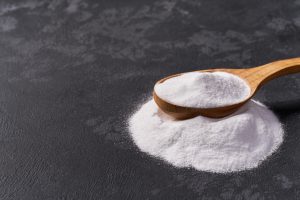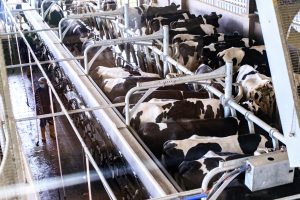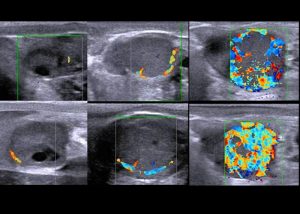Álvaro García
Wheat bran, a by-product of the wheat milling process, is utilized worldwide as an animal feed ingredient due to its availability, cost-effectiveness, and adaptability to diets. It is particularly valued for its fiber content, moderate protein levels, and other essential nutrients. It consists of the outer layer of the wheat kernel, separated during the milling process to produce refined flour. It comprises the pericarp, seed coat, and aleurone layer, all of which are nutrient-rich. Depending on the milling process, wheat bran can vary in particle size and nutrient composition. There are three presentations available depending on the specific market: fine wheat bran which is characterized by smaller particle size and more uniform texture; coarse wheat bran with larger particles and often used for ruminants; and pelleted wheat bran, which is compressed into pellets for easier handling and reduced feed waste. Each type has distinct applications based on the nutritional needs of different animal species and feeding systems.
Nutrient composition
Wheat can be a valuable ingredient in animal feed, with a composition that varies depending on factors such as wheat variety, milling processes, and processing conditions. Carbohydrates form a significant portion of wheat bran, with a high concentration of fiber, predominantly insoluble types like cellulose, hemicellulose, and lignin. Soluble fibers, including arabinoxylans, are present in smaller quantities but can still contribute to digestive health and some additional energy. Wheat bran also contains small amounts of starch, adding to its carbohydrate profile. In terms of protein, it offers moderate concentration, typically ranging from 13% to 18% on a dry matter basis. While its amino acid profile is not as balanced as that of soybean meal or other high-protein feed ingredients, it still includes beneficial amounts of lysine and methionine, essential for animal growth and production. The lipid content is low, averaging around 3% to 5%, with unsaturated fatty acids being the primary type.
Table 1. Nutrient composition of wheat bran | |
Typical concentration per kg | |
Energy (ME) | 2.5–3.0 Mcal ME (ruminants) |
Crude Protein | 12–17% |
Neutral Detergent Fiber (NDF) | ~40–50% |
Acid Detergent Fiber (ADF) | ~10–15% |
Phosphorus | 0.9–1.3% (mostly as phytate) |
Fat | 3-5% |
Calcium | 0.1–0.2% |
B-Vitamins | Trace amounts |
- Energy: Wheat bran is lower in energy compared to grains due to its high fiber content. It provides 2.5–3.0 megacalories (Mcal) of metabolizable energy (ME) per kilogram for ruminants and slightly less for non-ruminants.
- Protein: Contains 12–17% crude protein with a relatively good amino acid profile, with moderate levels of lysine.
- Fiber: High in neutral detergent fiber (NDF, ~40–50%) and acid detergent fiber (ADF, ~10–15%), which dilutes its energy concentration particularly for non-ruminants.
- Minerals: Rich in phosphorus (0.9–1.3%) but mostly in the form of phytate, which has low bioavailability for monogastric animals. Moderate levels of calcium (0.1–0.2%) and other trace minerals like zinc and manganese.
- Vitamins: Contains some B-vitamins, particularly niacin and pantothenic acid, though concentrations are low.
Benefits of wheat bran in animal diets
For ruminants (cattle, sheep, goats):
- Excellent fiber source, promoting rumen fermentation and overall gut health.
- It can be included as an energy extender during times of grain shortages.
For non-ruminants (pigs, poultry):
- Moderate protein content can be included in balanced diets (see Inclusion Rates below).
- Acts as a bulking agent to prevent constipation, especially in sows and layers.
For Horses:
- Provides fiber to support hindgut fermentation.
- Commonly used in mash form to increase water intake and improve gut motility.
Nutritional risks and considerations
While wheat bran has several benefits, its inclusion in diets should be managed carefully to avoid potential drawbacks:
- Phytate Phosphorus:
- Most of the phosphorus in wheat bran is bound as phytate, which is poorly digested by non-ruminant animals. Adding phytase enzymes to the diet can improve phosphorus bioavailability.
- Imbalanced Calcium-to-Phosphorus Ratio:
- Wheat bran’s low calcium and high phosphorus levels can disrupt the calcium-to-phosphorus ratio, leading to metabolic disorders such as urinary calculi in livestock. Supplementing calcium sources like limestone is recommended (3% limestone).
- High Fiber Content:
- For non-ruminants, excessive fiber can reduce energy density and feed efficiency. It is important to moderate its inclusion (see below) and balance wheat bran with energy-dense ingredients like corn or soybean meal.
- Storage and Spoilage:
- Due to its high moisture absorption capacity, wheat bran is prone to mold growth if not stored in dry, well-ventilated conditions. As a result it is susceptible to mycotoxin contamination, particularly if derived from wheat grains that were improperly stored or exposed to high moisture levels. Common mycotoxins include aflatoxins, deoxynivalenol (DON), and zearalenone, which can negatively affect animal health by reducing feed intake, impairing growth, or causing reproductive issues. Regular mycotoxin testing and proper storage conditions are essential to minimize this risk.
Inclusion rates
Recommended inclusion rates vary by species and production stage:
- Ruminants: Up to 30% of the diet, depending on forage quality.
- Swine: 5–15%, with careful balancing of energy and protein.
- Poultry: 3–5%, primarily for layers and broilers.
- Horses: Up to 10%, typically in mash form.
Consulting a nutritionist is advisable to optimize wheat bran inclusion while maintaining diet balance.
Comparing the bran’s economic value
We can compare wheat bran’s economic value by assigning 100 or the “standard” of an energy feedstuffs to corn grain. Wheat bran would typically have an energy value of 70–75 for ruminants and 60–65 for non-ruminants. This estimate is based on the following considerations:
- Energy: Wheat bran has lower energy (2.5–3.0 Mcal/kg for ruminants) compared to corn (3.2–3.5 Mcal/kg).
- Fiber: The high fiber content in wheat bran reduces its energy availability for non-ruminants, making it less efficient compared to corn.
- Protein and Phosphorus: While wheat bran has higher protein and phosphorus levels than corn, its energy is still significantly lower, particularly for non-ruminants that struggle to utilize its fibrous components effectively.
Wheat bran is a cost-effective feed ingredient that offers significant benefits when used appropriately. Its high fiber and moderate protein content make it particularly suitable for ruminants, while it can also play a valuable role in diets for non-ruminants and horses. However, careful management of its inclusion rates, nutrient balance, and storage conditions is essential to avoid potential risks such as mineral imbalances and reduced feed efficiency. With proper formulation and supplementation strategies, wheat bran can contribute to sustainable and nutritionally balanced feeding programs.
© 2025 Dellait Knowledge Center. All Rights Reserved.









